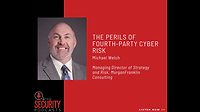In legal professions, safeguarding documents and paperwork is an essential office task. These papers may contain important, private information about a company’s operations, or they may include other privileged information shared by clients concerning their cases. In an increasingly digital world, the lock and key of the filing cabinet are no longer enough to guarantee document security.
How can your practice better protect the digital files it stores? Take a moment to consider these six tips for implementing better security surrounding these important documents.
1. Store Documents of Similar Security Levels Together
When creating a digital filing system to store your sensitive documents, it is vital to employ a classification system that makes sense today and tomorrow. In other words, documents of similar sensitivity levels should all go into the same general area of your local or cloud infrastructure. The effect is twofold. First, you always know exactly where to locate particular types of documents. Second, you can standardize the types of security you apply to these documents based on their overall security level, rather than classifying every document individually all over again.
2. Prefer Group Permissions Over Individual Access
Controlling access to confidential information is important; not everyone within a legal practice may have the authority or right to view certain documents. Access control systems, such as Microsoft's Active Directory Rights Management Services, serve an important role in designating which files remain accessible by which users. Leaving secure documents in insecure places on your computer networks or in the cloud not only raises the risk of an incident caused by an outside intruder but also increases the risk of a leak from within your office. At the least, it's an unacceptable liability.
3. Use Software That Enables Secure Document Management
It's tough to overrate the value of software tools that put security features right at your fingertips. Law offices, increasingly working in a paperless environment, require cost-effective programs that make secure document management easy. Whether that means redacting information before turning over discovery materials, affixing a certifiable signature, or encrypting files altogether, the right tools make the difference.
4. Protect and Encrypt Your Most Sensitive Files
Speaking of encryption, it is advisable to lock down your files in general. An intern or clerk should not be able to find sensitive client information in a file folder and simply start browsing and reading with a few clicks. Using password-based encryption is an easy way to ensure that wayward eyes can't access information without authorization.
5. Safeguard Against Tampering with Secure Digital Signatures
Using cryptographic certificates, modern digital signatures provide binding proof of who authorized a document and when. In the legal field, ensuring the authenticity of documents is of the utmost importance. Use tools that have anti-tampering measures built-in to ensure that your documents hold up to the strict scrutiny given to paperwork in the legal profession.
6. Keep Safe Backups
Nothing is worse for a firm than losing essential papers that you cannot replace. Without the need for additional physical storage space, keeping your legal documents secure in the cloud is an easier way to guarantee access now and in the future. Whatever backup solution you choose, continue to follow the practices outlined here. Group files together into sensible backup folders, and make sure you've password-protected your documents and encrypted the backup. When your document management solution integrates with ease into standard cloud services such as Microsoft Sharepoint, you can exert a highly granular control over permissions and security settings.
Make Changes to Protect Your Legal Documents Today
With best practices in place and the appropriate software tools powering your efforts behind the scenes, creating a modern security setup for your legal team is simple. Straightforward, easy-to-use, and cost-effective tools make quick work of security workflows. When everyone can use the same tools and follow the same procedures, you can confidently reduce the risk of sensitive information leaking from your office. Learn more about how to empower your efforts to improve security today.



